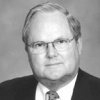Before beginning this column on the state of the city, I'd like to recognize Mary Haynes, our city clerk, who was the subject of our two-part series on the Office of the Clerk. Mary has done an excellent job serving our community as clerk since 1985, and we greatly appreciate her continued commitment to serve.
Our city and region have faced many challenges over the years, but today we have much to be proud of. We have a vibrant city and region making amazing progress. We're revitalizing our economy in three economic target areas: Peoria NEXT, logistics and supply chain management, and science-based health care.
Peoria NEXT is working to make us nationally recognized as one of the preferred Midwestern locations for research, innovation, and development. It hosts monthly meetings, bringing entrepreneurs and venture capital firms together to build new and innovative businesses. It currently has more than 100 early stage ventures in various stages of development.
The City of Peoria created the Med/Tech District to provide a home for Peoria NEXT projects. The first planned development is the building of an incubator that will house start-up enterprises.
In 2003, with the leadership of the Economic Development Council of Central Illinois and our area elected officials, the Heart of Illinois Regional Port District was established by Illinois statute. It created a six-county district with authority to generate revenue-through user fees-that can be invested to bring new businesses and jobs to our region.
With our health care assets, we have the potential to become a national destination for state-of-the-art health care. This will require a high degree of collaboration between our various health care providers.
Over the past two years, more than 1,000 Peoria citizens actively participated in a charrette-based process to develop a plan for the heart of our city led by world-renowned city planners Duany Platner-Zyberk & Company. Key principles of this plan include: having more people living downtown, creating a more pedestrian friendly city, creating a "24/7" city with places to eat and things to do around the clock, and creating a more urban character.
Our ability to participate in the new knowledge economy depends on attracting the new creative class of young scientists, technicians, academics, and many other people required to support their work. Developments have begun along the river, downtown, and in the Warehouse District.
We're creating a learning community. Achievements include broad-based participation in the District 150 plan; formation of ICC North; Bradley University's national recognition; development of a Youth, Education and Learning Task Force; and Workforce Development initiatives.
We're enhancing our quality of life and ability to attract tourists. Achievements include world-class art exhibits, the new museum block, plans to expand the Peoria Civic Center, plans to create the new Peoria Zoo, and new retail developments.
We have a vision for our future and a plan to get there: Vision 2020. The greater Peoria region is a highly desirable place to live, with great natural beauty and resources, a proud history and heritage, and an abundance of leisure-time things to do. Our well-educated population has a strong work ethic and wide range of businesses and jobs from which to choose. We're a region proud of our diverse people and ideas, and we accomplish great things together.
Our vision planning process has been active and inclusive. Over a period of 18 months, more than 1,800 people from a dozen communities in our region worked together to develop our vision, 18 goals, and a variety of plans. Citizen volunteers, facilitated by paid consultants, accomplished these planning activities.
To assure implementation activities in our region are well coordinated, that efforts aren't duplicated, and that no good idea gets left undone, implementation progress will be overseen by a Vision 2020 Leadership Council reporting to the Peoria Civic Federation.
Four Community Councils will coordinate our planning activity to reach 18 strategic goals identified in the planning process. Appropriate consultants, the Heartland Partnership, and community volunteers will support implementation.
The Vision 2020 Web site is being developed to coordinate regional planning activities, foster understanding and commitment to a common vision, avoid duplication of effort, enable collaboration, and improve understanding of activities occurring in our entire region. Strategic plans and action plans from participating organizations throughout our region will be available and searchable.
We're poised at this moment in time for a bright future. If we work together to seize the moment, we can make our vision a reality. IBI

